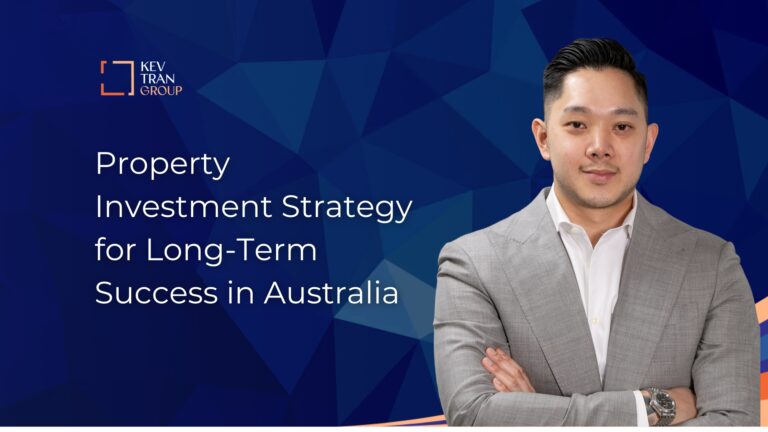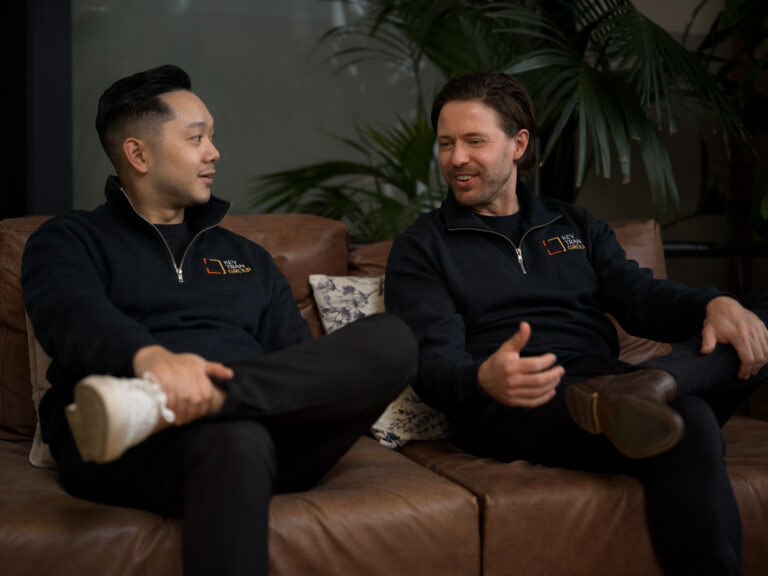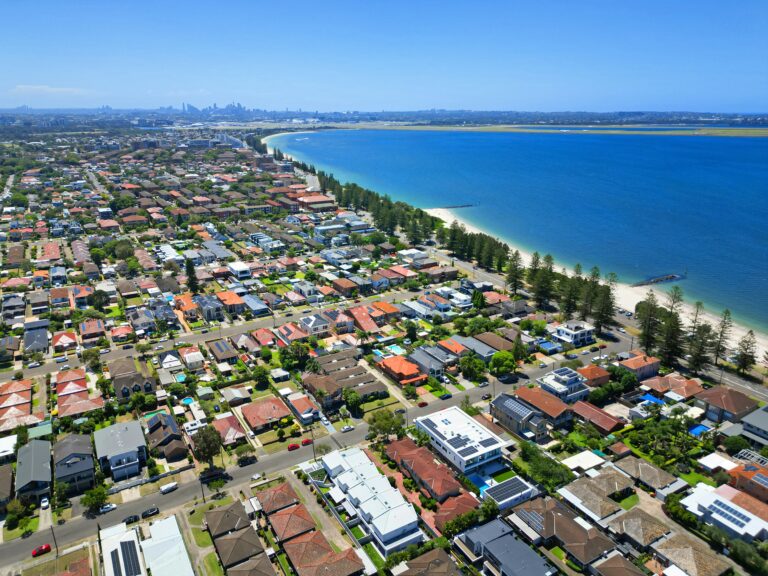Should Your First Property Be a Home or an Investment?
Buying your first property is a turning point, and the choice comes down to one question: should it be your home or your first investment property? This decision directly impacts your borrowing power, your lifestyle, and your long-term wealth.
Many Australians choose a home first. However, research shows that 90% of investors never progress beyond one or two properties because their first move restricted their ability to grow.
As a result, deciding between a first property home or investment becomes the key factor in whether you build a sustainable portfolio or remain limited.
At Kev Tran Group, we approach this decision with clarity before action. Through our due diligence process, we analyse cash flow, capital growth, and market fundamentals so clients avoid costly mistakes.
In this article, we unpack the Principal Place of Residence (PPOR) vs investment property dilemma step by step.
We’ll compare the pros and cons, run the numbers, and explain how a smart strategy helps you scale beyond a single purchase.
If you’re ready to move from uncertainty to clarity, book a call with Kev Tran Group and start your property journey the right way
Home (PPOR) vs Investment Property
The first decision for many buyers is whether to purchase a PPOR or an investment property. A PPOR is the home you live in, offering stability, comfort, and the freedom to create a lifestyle for your family. It also comes with the benefit of being exempt from capital gains tax when sold.
The limitation is that a home does not generate income. Mortgage repayments on a PPOR reduce borrowing power and can restrict future acquisitions.
Kev Tran Group sees many clients get stuck at one or two properties because their first purchase locked them out of further growth.
An investment property is purchased with the purpose of generating rental income and long-term capital growth. Our property investment strategy explains how we balance cash flow and capital growth to create sustainable portfolios.
Key distinctions include:
- Usage: A PPOR is where you live; an investment is tenanted.
- Tax treatment: PPOR sales are CGT-free; investments attract tax concessions.
- Financial impact: PPOR debt does not create income; investment debt can be supported by rent.
Both paths are viable starting points. The choice depends on goals, borrowing power, and readiness to prioritise lifestyle or wealth building.
Buying a Home First (PPOR)
For many first-time buyers, purchasing a PPOR feels like the natural step. Living in your own home delivers a sense of permanence and allows you to put down roots in a community. It creates lifestyle certainty, especially for families who want control over schools and neighbourhoods.
When weighing up this option, there are clear advantages that appeal to stability and lifestyle. At the same time, there are drawbacks that can restrict financial growth. Below, we outline both sides to help you see the bigger picture
Pros of Buying a PPOR First
A home provides emotional benefits that renting cannot match. There is pride in knowing you are not subject to landlord decisions or rising rents. This sense of control is often the main reason buyers prioritise a PPOR over an investment property.
Another advantage is stability. Families can plan their lives around chosen suburbs, work commutes, and lifestyle preferences. For many, these lifestyle factors outweigh purely financial considerations.
Cons of Buying a PPOR First
On the other hand, a PPOR is not an income-producing asset. Monthly repayments reduce available borrowing capacity and limit the ability to reinvest. Without rental yield, the debt burden falls solely on the household budget.
Kev Tran Group has seen many clients run into this roadblock. Research shows 90% of investors never expand beyond one or two properties because their first decision restricted future moves.
A high-value home in Sydney or Melbourne can make it almost impossible to build a scalable portfolio.
The Numbers Behind Home vs Investment
When we remove the emotion from property decisions, the numbers tell the real story. The choice between a first property home or investment changes how quickly you can build equity, manage cash flow, and unlock borrowing capacity. This is why we always model the scenarios before advising clients on their next step.
Take the example of a $1 million home as a first purchase. Repayments are high, there is no rental income to support the loan, and borrowing power can be capped for years. Even with growth, accessing equity for another property is far more difficult.
Now compare that with a $600,000 investment showing a 4.5% rental yield. Rental income cushions holding costs, and steady growth creates equity that can be leveraged into the next purchase.
Here is a simplified 10-year projection:
- Scenario A (PPOR): $1M home with 5% annual growth = $1.63M value, but limited usable equity.
- Scenario B (Investment): $600K property with 5% growth = $977K value, plus $27K rental income across the period. The added cash flow improves holding power and borrowing options.
The numbers are clear. A PPOR can deliver lifestyle benefits, but an investment-first strategy often accelerates financial outcomes.
Matching the Choice to Your Goals
The decision to buy your first property as a home or an investment depends on what you value most. Some buyers place lifestyle stability first, while others want financial growth and flexibility.
Kev Tran Group always frames the choice around your bigger picture, not just the next purchase.
For families, a PPOR may suit if certainty around schools, community, and long-term roots is the main priority.
The trade-off is that borrowing capacity and cash flow become tighter, slowing the pace of future acquisitions. In these cases, timing the purchase within a broader plan is crucial.
For professionals focused on wealth creation, starting with an investment often provides more leverage. Rental yield and compounding growth can help you build a portfolio that works harder for you.
Our due diligence process ensures each property aligns with both capital growth and holding power, balancing risk across the journey.
No matter the path, clarity comes first. We assess borrowing power, buffers, and long-term objectives before recommending either option. This way, clients avoid short-term decisions that clash with their long-term vision.
Kev Tran Group’s Philosophy
Our approach is grounded in the same portfolio-building process we have used ourselves, growing four properties by age 33 and focusing only on markets we are confident to invest in personally.

We place quality above quantity. Many Australians think they need ten properties to retire, but we prove that the right properties, purchased with data and due diligence, can deliver stronger results.
Our focus is on sustainable assets that balance capital growth and cash flow, supported by conservative assumptions.
Due diligence is central to our philosophy. Every purchase is filtered against suburb fundamentals, rental yields, and detractors such as flood risk, bushfire zones, or overexposure to public housing. This system protects clients from making costly mistakes and ensures their portfolios remain scalable.
We invest in the same markets we recommend, which means our guidance is tested by both data and lived results. This reinforces our core principle of clarity before action every decision is tied to long-term outcomes, not short-term emotions.
To see how this philosophy works in practice, explore Kev Tran Group for more insights or follow us on Facebook for updates from the markets we track.
Making the Right First Property Decision
Getting the first step right matters more than any decision that comes after.
A PPOR may provide lifestyle stability, while an investment can accelerate financial outcomes, but both require a clear strategy to work. Kev Tran Group helps clients cut through confusion and move forward with confidence.
We know the wrong first step can lock investors out of future opportunities. By contrast, the right asset in the right market creates leverage, cash flow, and equity that can be used to scale.
This is why our clients trust us to guide them through research, location selection, and long-term portfolio planning.
If you are ready to decide whether your first property should be a PPOR or an investment, now is the time to get clarity. Book a clarity call with Kev Tran Group today, and we will design a strategy tailored to your goals so your first move builds the foundation for lasting success.







